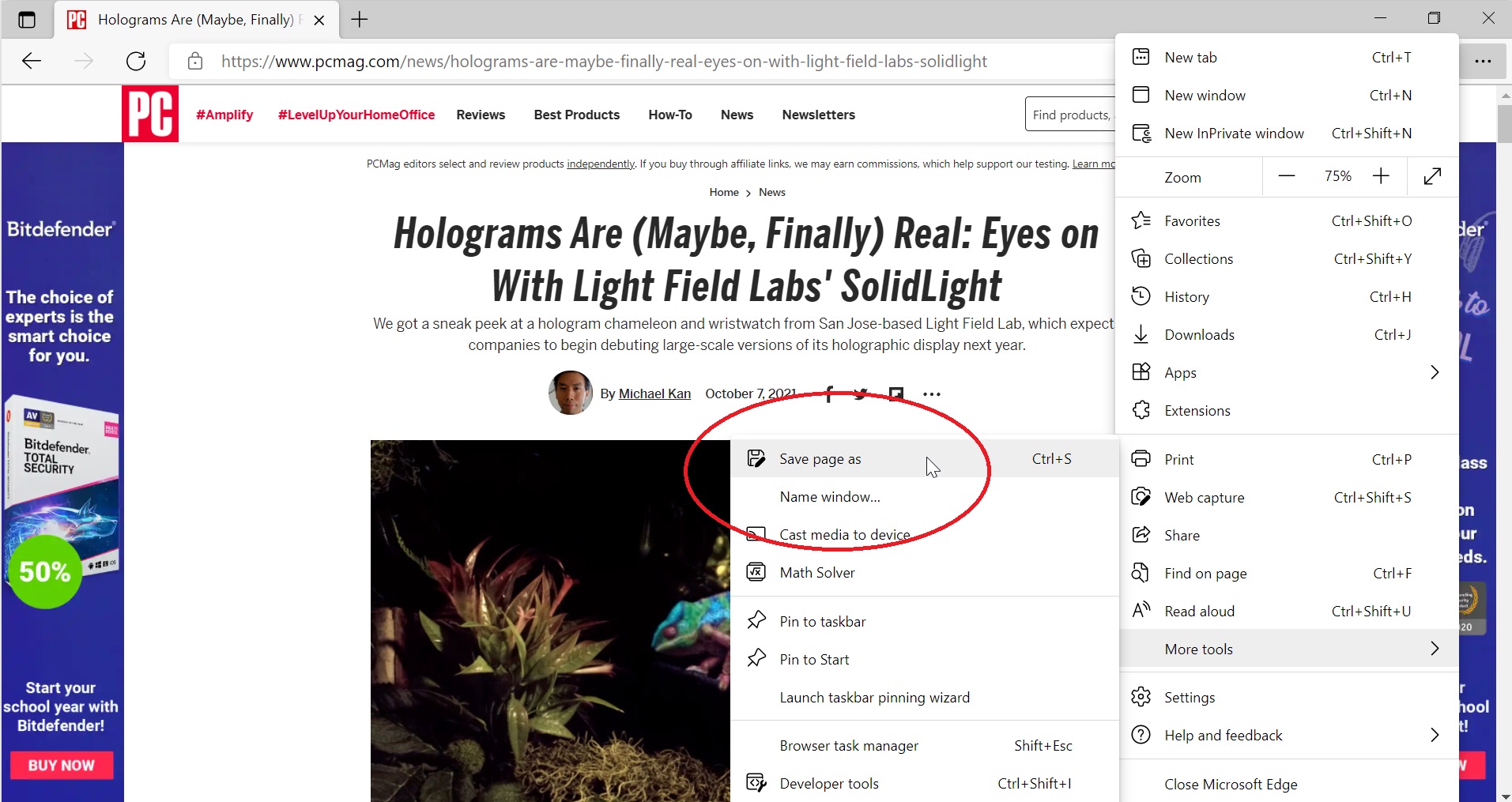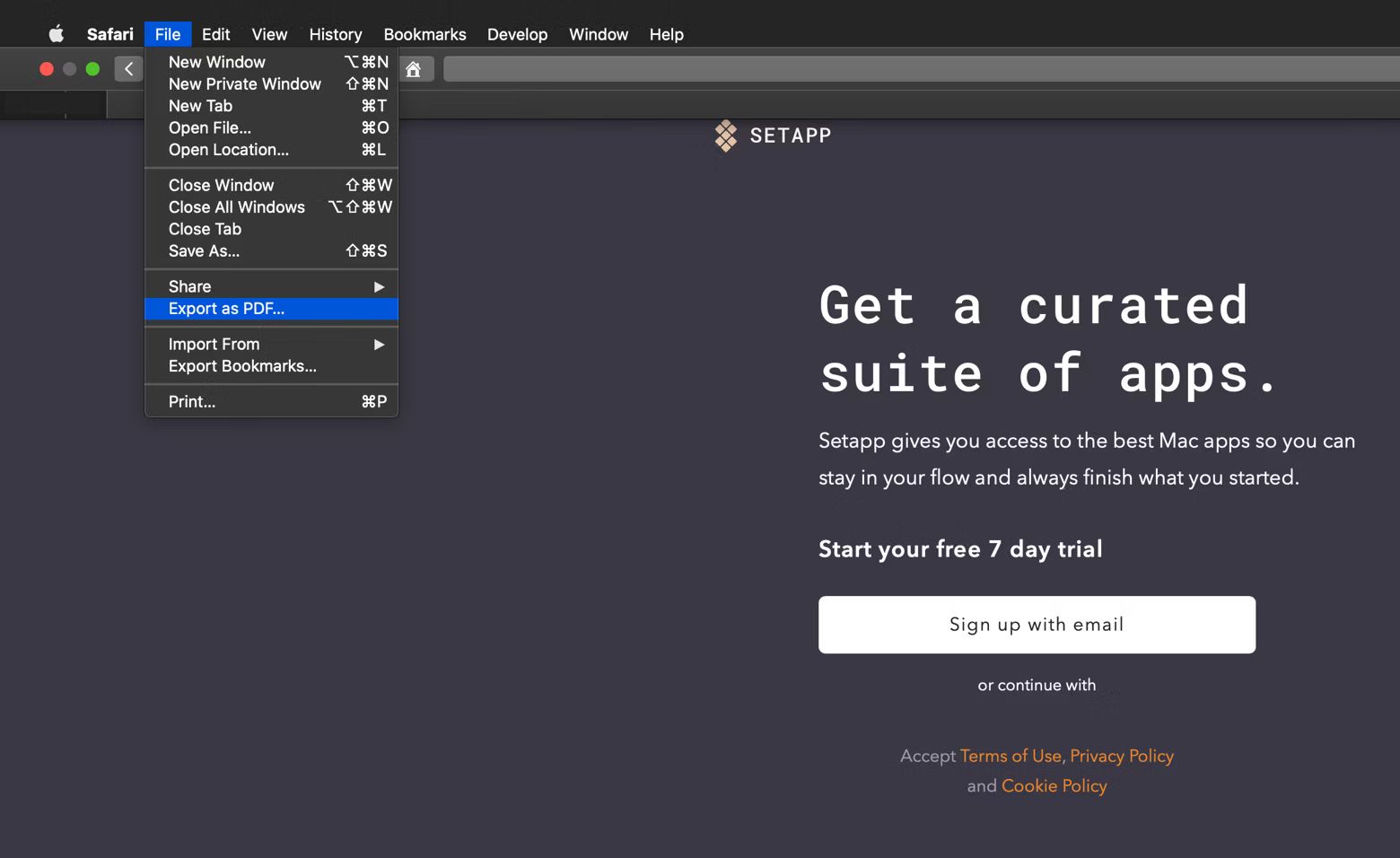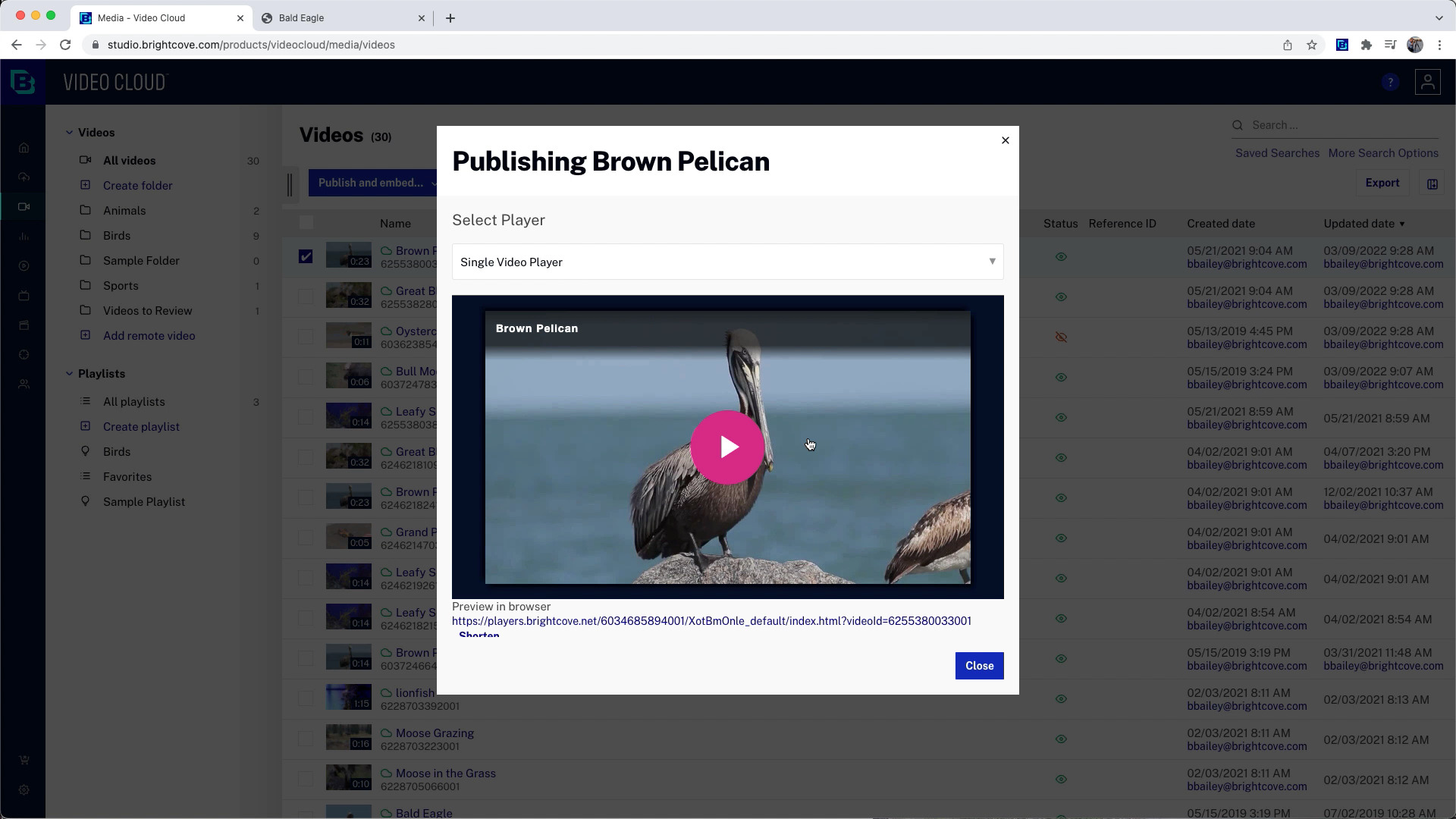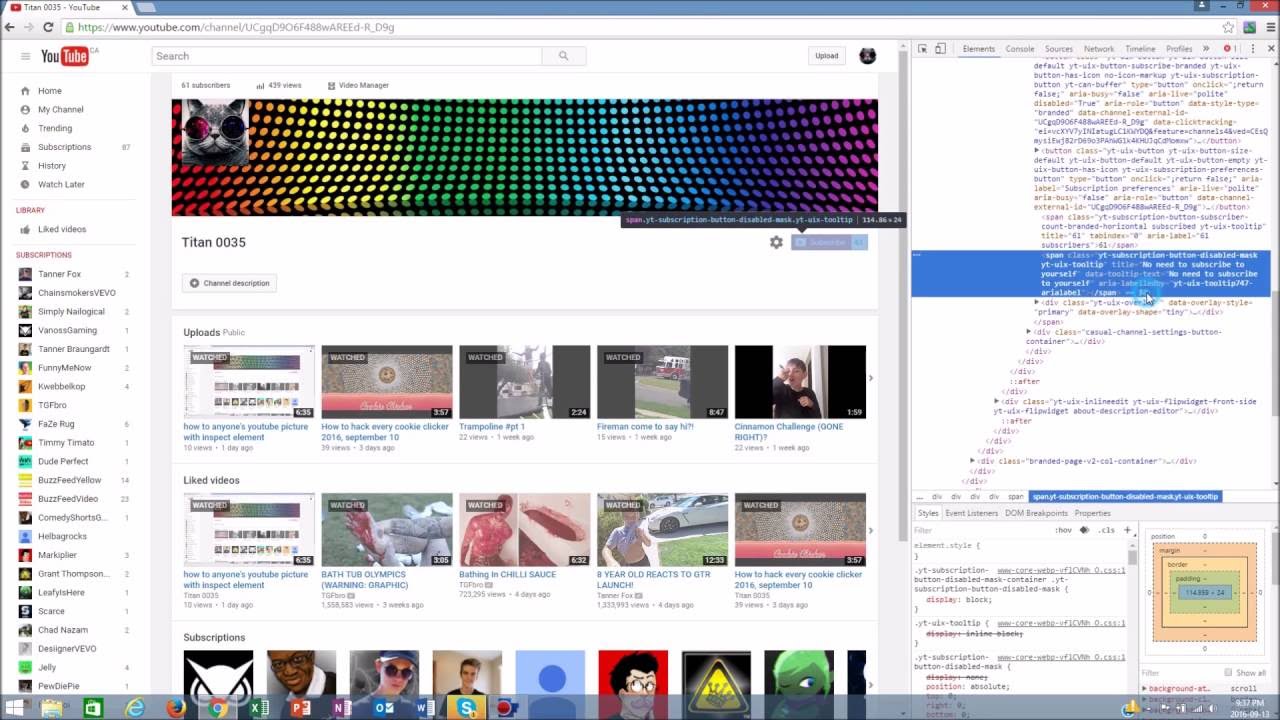Introduction
In today's digital age, the internet serves as a vast repository of information, offering a plethora of resources at our fingertips. However, there are instances when we may not have access to a stable internet connection, hindering our ability to retrieve essential web content. This is where the ability to save webpages for offline viewing becomes invaluable. Whether it's an insightful article, a captivating story, or a crucial set of instructions, having the option to access web content offline can greatly enhance productivity and convenience.
Fortunately, Google Chrome, one of the most popular web browsers, offers several built-in and third-party options to save webpages for offline viewing. By leveraging these features, users can seamlessly access their favorite web content even without an internet connection. In this article, we will explore various methods to achieve this, empowering users to make the most of their browsing experience.
From Chrome's native save feature to third-party extensions and the reading list functionality, there are multiple avenues to explore when it comes to preserving web content for offline access. By understanding and utilizing these options, users can ensure that their favorite articles, tutorials, and reference materials are readily available, regardless of their internet connectivity.
Let's delve into the diverse approaches available within Chrome to save webpages for offline viewing, enabling users to curate their own personalized library of digital content. Whether it's for educational, professional, or leisure purposes, the ability to access web content offline can significantly enrich the browsing experience.
Using Chrome's Built-in Save Feature
Google Chrome offers a convenient built-in feature that allows users to save webpages for offline viewing with ease. This native functionality eliminates the need for third-party extensions, providing a seamless and integrated solution for preserving web content. To utilize this feature, users can follow these simple steps:
-
Accessing the Save Feature: When browsing a webpage that you wish to save for offline viewing, click on the three-dot menu icon located at the top-right corner of the Chrome browser window. From the dropdown menu, select "More tools" and then click on "Save page as…".
-
Choosing the Save Location: Upon selecting "Save page as…", a dialog box will appear, prompting you to choose the destination where you want to save the webpage. You can opt to save it to your computer or an external storage device, ensuring that the content is readily accessible even without an internet connection.
-
Selecting the Format: Chrome offers the flexibility to save webpages in different formats, including "Webpage, Complete" and "HTML Only". The "Webpage, Complete" option saves the entire webpage along with associated files such as images and stylesheets, while the "HTML Only" format preserves the webpage as a single HTML file.
-
Confirming the Save: After specifying the save location and format, click the "Save" button to initiate the saving process. Chrome will promptly download and store the webpage, enabling you to access it offline at your convenience.
By leveraging Chrome's built-in save feature, users can effortlessly compile a personalized collection of web content for offline viewing. Whether it's a research article, a recipe, or a tutorial, this native functionality empowers users to curate their own digital library without relying on external tools or extensions. This straightforward approach aligns with Chrome's user-friendly interface, catering to the diverse needs of individuals seeking to access web content offline.
In addition to its simplicity, Chrome's built-in save feature ensures that the saved webpages retain their original formatting and interactivity, delivering a seamless offline browsing experience. This means that hyperlinks, images, and other multimedia elements within the webpage remain fully functional, preserving the integrity of the content even in offline mode.
Overall, Chrome's native save feature stands as a reliable and accessible option for users who prioritize convenience and integration. By incorporating this built-in functionality into their browsing routine, individuals can effortlessly build a repository of valuable web content, ready to be accessed anytime, anywhere, regardless of internet connectivity.
Using Third-Party Extensions
In addition to Chrome's native save feature, users can explore the option of leveraging third-party extensions to enhance their ability to save webpages for offline viewing. These extensions offer additional functionalities and customization options, catering to diverse user preferences and requirements. By integrating these extensions into the Chrome browser, individuals can expand their offline browsing capabilities and tailor the experience to align with their specific needs.
One notable advantage of third-party extensions is the potential for enhanced automation and organization when saving web content for offline access. These extensions often provide advanced features such as batch saving, folder organization, and automatic syncing across devices, streamlining the process of curating and managing offline content. This level of flexibility and efficiency can significantly elevate the offline browsing experience, particularly for users who frequently rely on saved webpages for reference or leisure purposes.
Furthermore, third-party extensions can offer specialized functionalities that cater to specific types of web content. For instance, there are extensions designed specifically for saving articles, PDFs, images, or entire webpages with intricate formatting. This level of customization allows users to tailor their offline content library to suit their individual interests and professional requirements, ensuring that the saved webpages are optimized for seamless offline access.
When exploring third-party extensions for saving webpages, users should prioritize reputable and well-reviewed options available in the Chrome Web Store. By selecting extensions with positive user feedback and a history of regular updates, individuals can mitigate potential compatibility issues and security concerns, ensuring a reliable and secure offline browsing experience.
It's important to note that while third-party extensions offer an array of additional features and customization options, users should exercise caution and discretion when granting permissions to these extensions. Prioritize extensions from trusted developers and review the permissions requested by each extension to maintain a secure browsing environment.
In summary, third-party extensions present a valuable avenue for users seeking to expand and customize their offline browsing capabilities within the Chrome browser. By carefully selecting reputable extensions that align with their specific needs, users can elevate their ability to save and access web content offline, fostering a personalized and efficient browsing experience.
Using Reading List Feature in Chrome
Google Chrome offers a convenient and intuitive Reading List feature, designed to streamline the process of saving webpages for later access. This built-in functionality serves as a dedicated space within the browser for curating a personalized collection of articles, stories, tutorials, and other web content, ensuring that users can seamlessly access their saved items at their convenience.
To leverage the Reading List feature in Chrome, users can follow these simple steps:
-
Adding Webpages to the Reading List: When browsing a webpage that you intend to save for later reading, click on the star icon located in the address bar. This action prompts a dropdown menu, where you can select "Add to Reading List". By doing so, the webpage is efficiently added to your Reading List, ready to be accessed even without an internet connection.
-
Accessing the Reading List: To view and manage the saved webpages, click on the three-dot menu icon at the top-right corner of the Chrome browser window. From the dropdown menu, navigate to "Bookmarks" and then select "Reading List". This grants you access to your curated collection of saved web content, organized within the Reading List interface for effortless browsing.
-
Offline Access: The Reading List feature in Chrome ensures that the saved webpages are readily available for offline viewing. This means that users can access their curated collection even when they are not connected to the internet, allowing for uninterrupted reading and reference regardless of the current connectivity status.
The Reading List feature in Chrome offers a seamless and integrated solution for individuals who prioritize efficiency and organization when saving web content for later consumption. By centralizing the saved webpages within the browser, this feature eliminates the need for external tools or extensions, providing a streamlined and user-friendly approach to offline content curation.
Furthermore, the Reading List feature aligns with Chrome's commitment to user-centric design, offering a straightforward and accessible method for managing and accessing saved web content. Whether it's a collection of informative articles, captivating stories, or essential reference materials, the Reading List empowers users to curate their own digital library within the familiar Chrome interface.
In essence, the Reading List feature in Chrome serves as a valuable asset for individuals seeking a native and integrated solution for saving webpages for offline viewing. By incorporating this feature into their browsing routine, users can effortlessly compile and access their curated collection of web content, enhancing their offline reading and reference experience within the Chrome browser.

























